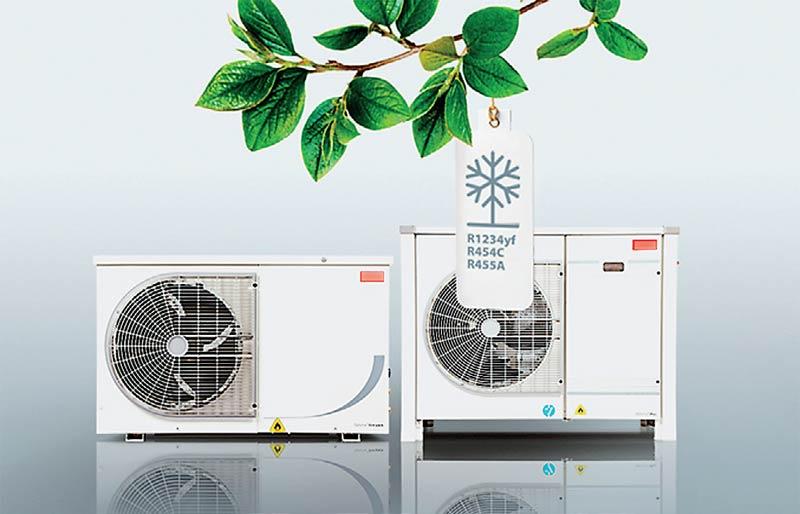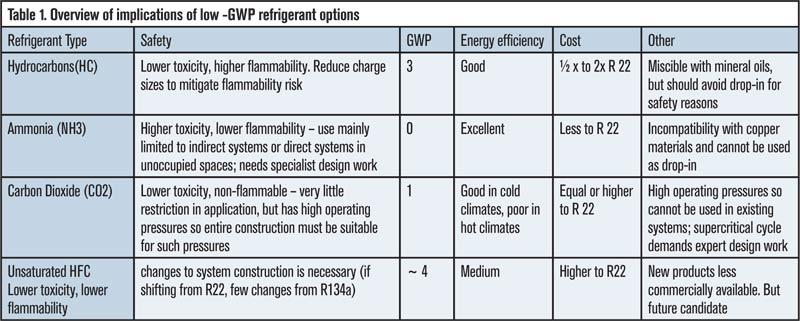Reply To:
Name - Reply Comment
Last Updated : 2024-05-04 00:05:00

Air Conditioner containing Low GWP refrigerant (R 1234yf/R 454C/ R 455A)
The Montreal Protocol is one of the most successful environmental agreements to date. A united global effort to phase out ozone-depleting substances contributed for healing the hole in the ozone layer and in turn protecting human health, economies and ecosystems. But, as this year’s World Ozone Day seeks to highlight, the Montreal Protocol does so much more – such as slowing climate change and promoting energy efficiency in the cooling sector, which contributes mainly to food security. The theme for this year is Montreal Protocol – keeping us, our food and vaccines cool.
Many ozone-depleting substances (ODS) as well as some Hydrofluorocarbon (ODS substitutes) warm the climate. With the Kigali Amendment, nations have a chance to repaint this grim picture. They are promising to reduce the use of hydrofluorocarbons (HFCs), in refrigerators, air conditioners and related products by more than 80% over the next 30 years.
Energy efficiency and Green Cold chain
On the first day of 2019, the Kigali Amendment to the Montreal Protocol entered into force for a global resolution to reduce greenhouse gas (GHG) emissions mainly from the cooling industry. The Amendment also opens a window for new innovation replacing HFCs offers an opportunity to redesign air conditioning and refrigeration to use less power, allowing expansion of comfort cooling and cold chain efficiencies without increasing climate impacts. The combination of reducing HFC consumption and improved cold chain efficiencies, particularly in developing economies, will also combat food loss.
Around one third of all food produced globally for human consumption is either lost or wasted each year, largely due to a lack of access to cold chains. Food loss and waste amounts to billions of US dollars a year; not only wasting precious resources such as land, water and energy, but also generating an estimated 8 per cent of total greenhouse gases per year globally. To avoid irreversible damage to the environment and to ensure maximum agricultural efficiency, minimizing post-harvest losses is critical.
One way of doing this is through the establishment of a consistent and efficient cold chain. Setting up extensive and reliable cold chains plays a major role in reducing post-harvest losses worldwide. The vaccine cold chain is also playing a critical role to maintain vaccines in optimal condition. Vaccine cold chain failure can cost millions of rupees in lost vaccine can damage the public’s trust in vaccine if revaccination is needed. A cold chain is a temperature-controlled supply chain network, with storage and distribution activities carried out in a manner such that the temperature of a product is maintained in a specified range, required to keep it for a much longer period than in normal ambient conditions. The industry comprises of two segments- Temperature Controlled Warehousing (TCW) and Temperature Controlled Transportation (TCT) Vehicles (Reefer Vans).
The refrigeration systems in cold chains account for between 30% - 50% of the electricity consumption and has its drawbacks, through a direct impact on global warming through the emission of refrigerants and an indirect impact through energy consumption. In order to reduce the impact on the environment, it is vital to improve the energy efficiency of the refrigeration systems and to adopt refrigerants, such as natural refrigerants, that have zero or low climate impact. This minimizes the any negative environmental damages while ensuring that food production is operating efficiently with minimal food losses and preserving quality of vaccines.
Hydrochlorofluorocarbons (HCFCs) and Hydrofluorocarbons (HFCs) are currently used extensively throughout a range of different types of cold chain systems. The most commonly used HCFC is R22 (chlorodifluoromethane). However, some HFCs have on average a higher global warming potential (GWP) than HCFC 22, which could therefore increase the equivalent emissions of greenhouse gases from this sector. Since the use of HCFCs must ultimately be completely eliminated, then the use of alternatives refrigerants is a core element of the approach. There are a variety of different alternative refrigerants, and these may be categorised into the following several groups:
Each of these groups of alternative refrigerants possesses different characteristics that affect their suitability to be used, according to environmental, safety, cost and efficiency constraints. From a climate perspective, the first two groups – HFC/PFC/HC mixtures and HFC single components/HFC mixtures – all have high GWPs, (typically higher than R22).
These emissions could be greatly reduced, and energy efficiency could be achieved if refrigerants with a low-GWP (except CO2 systems)were used instead. Therefore, within the context of this current work, the latter four groups of alternatives are of interest. Table 1 provides an overview of these low-GWP alternative (LGA)) refrigerant categories and their general characteristics with regards to typical application criteria.
However, for those enterprises wishing to apply LGA refrigerants (such as refrigerant producers, equipment manufacturers/suppliers, contractors and end users), should understand the limitations or barriers. They may be separated into different types, of which the most relevant are described below.
Therefore, sufficient information, know-how, guidance, or technical data either in the form of literature or training are needed before they can embark on using a particular refrigerant. The National Ozone Unit of the Ministry of Environment has initiated several projects and programmes to boost energy efficient and LGA technologies under the Montreal Protocol activities.

Mr. M M Seneviratne UNDP consultant, Ex-coordinating officer, National Ozone Unit of Sri Lanka

Add comment
Comments will be edited (grammar, spelling and slang) and authorized at the discretion of Daily Mirror online. The website also has the right not to publish selected comments.
Reply To:
Name - Reply Comment
US authorities are currently reviewing the manifest of every cargo aboard MV
On March 26, a couple arriving from Thailand was arrested with 88 live animal
According to villagers from Naula-Moragolla out of 105 families 80 can afford
Is the situation in Sri Lanka so grim that locals harbour hope that they coul

03 May 2024